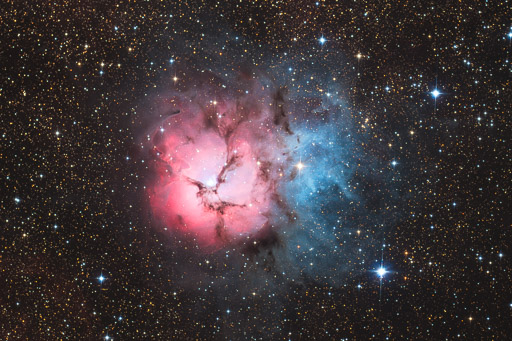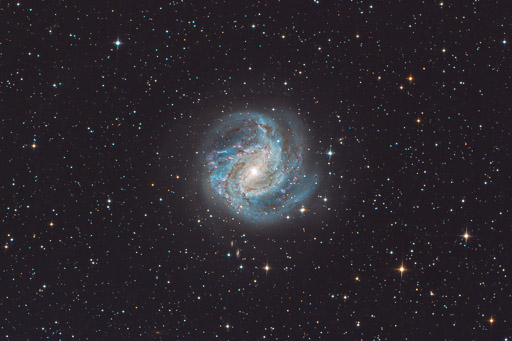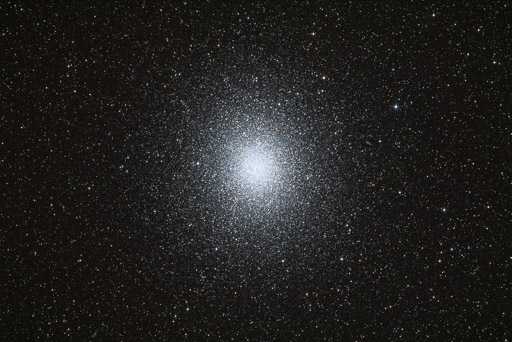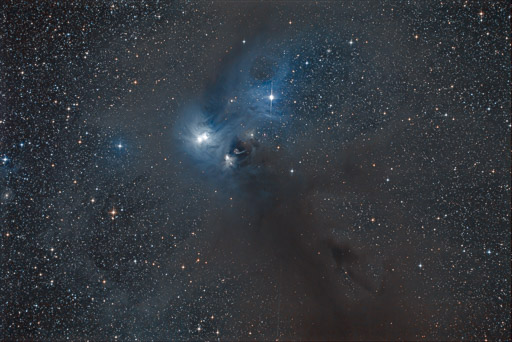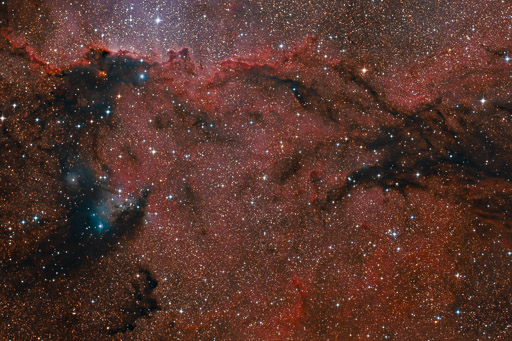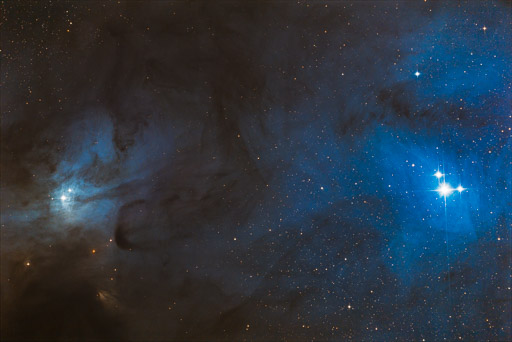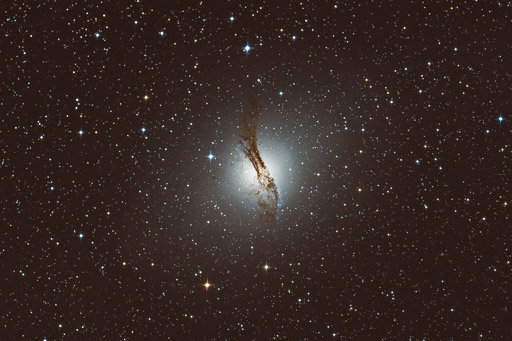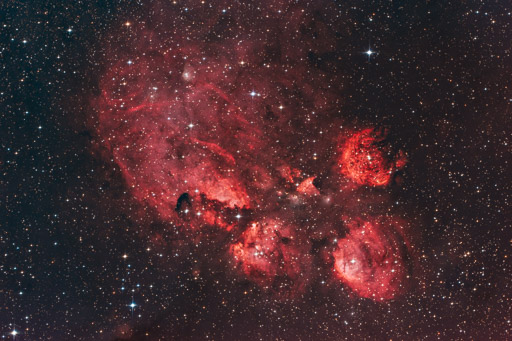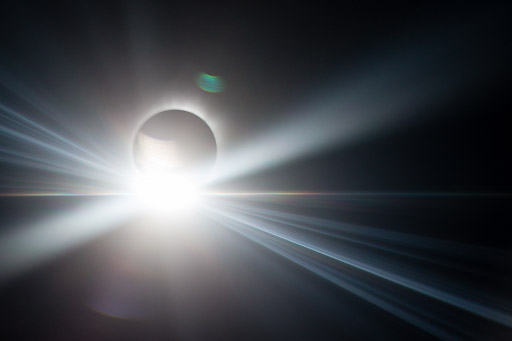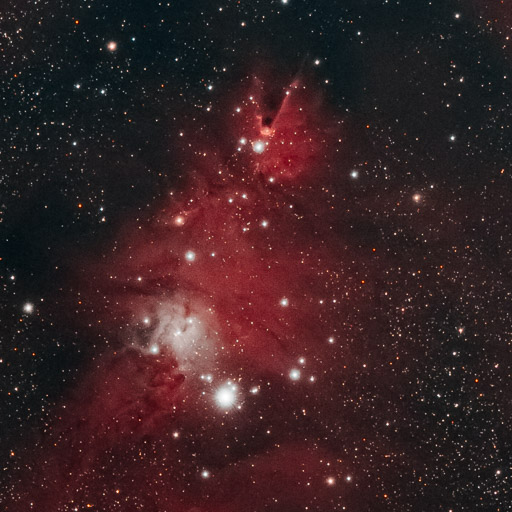IAS Observatory, Hakos, Namibia
20″ Philipp Keller Cassegrain primary focus @ 1500mm f/3
Liebscher Mount with FS2
Off axis guiding with Lodestar X2, dithering with BackyardEOS and PHD2
Canon 5D Mark II (a) or 5D Mark III (unmod), varying crop
Varying # of subs and exposure, see above, ISO 800 + sky flats/bias, no darks
Image processing DeepSkyStacker, Lightroom, Photoshop
Tag Archives: EN
Flight into Darkness
More than two years after our last one, we took the plunge and off into the darkness. Literally.
What I’m writing about is the total solar eclipse of 20 March 2015 over the Northern Atlantic Ocean, of course. A place and time where weather prospect weren’t exactly stellar or solar, thus quite early, already in 2013, we booked Eclipse Reisen’s e-flight (operated by Air Berlin, AB 1000) from Düsseldorf.
Into the car, onto the plane, into the darkness, back into the light and the Düsseldorfian fog, and home-bound again. 12 hours round-trip, certainly a very “efficient” eclipse trip. ;-)
The experience in the air was quite different from our previous ground-based eclipse excursions. A lot of the anxiety and anticipation – will we really see totality? – is missing, as success is almost guaranteed. And when the plane finally navigates into the “eclipse run”, the partial phase is mostly completed, we didn’t get to see C1 or C4.
But absolutely priceless is the view of the moon’s umbra moving across the clouds below, seemingly slowly catching up with the air plane, then plunging us into darkness, and finally off it goes, moving away from of us. Thus I’m very happy that I was able to catch this on video.
35,000 ft above the Northern Atlantic / Norwegian Sea with mid totality at 63°31’21.3″N 7°53’05.6″W / UTC 09:43:30. From the telephoto shots I did, the contact times and positions were as follows:
- C2 at UTC 09:41:35 / 63°20’18” N 8°13’23” W
- C3 at UTC 09:45:15 / 63°40’53” N 7°35’37” W
for a totality duration of 3min 40s.
Impressive, as it always has been and will be. Where’s the next one? …
Christmas Tree
Time-lapse London Ups and Downs
London 2013 – Ups and Downs from Martin Junius on Vimeo.
Short time-lapse video from London in October 2013.
Video created using AVISynth, VirtualDub, Handbrake. Music created using Beatmaker 2, Nave, Sunrizer on iPad.
And while we are at it, given this time of the year: Merry Christmas and a Happy New Year!
London
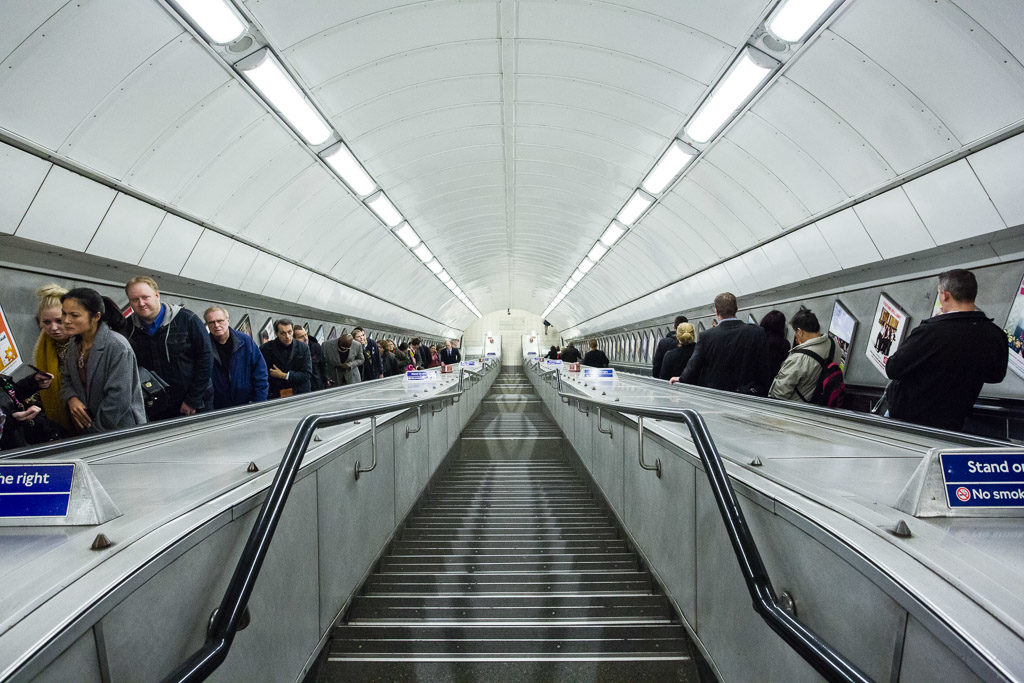
Nach geraumer Zeit mal wieder was Neues im Blog. Und in der Galerie, denn hier sind jetzt ein paar Eindrücke von vier Tagen London im Oktober eingetroffen.
After quite a while something new for the blog. And the gallery actually, here we have some impressions from four days in London during October.
Neues Outfit
[Post stark gekürzt.]
Wurde auch mal Zeit, mj’s photography gründlich zu renovieren. ;-) Ein neues Theme, basierend auf WordPress’ TwentyTwelve, EazyestGallery statt Coppermine und der ganze alte Kram ist weg. Diverse Redirects sollten aber externen Links the richtigen Weg weisen … viel Spaß!
About time for a thorough restructuring of mj’s photography. ;-) A new theme based on WordPress’ TwentyTwelve, EazyestGallery instead of Coppermine and all the old stuff is gone, too. Various redirects should help external links on their way to the right content … enjoy!
Lightroom and Star Trails

The relatively dark skies and several clear nights on Rügen’s “Muttland” during our recent Berlin-Rügen-Wismar trip had to be portrayed as a star trail, of course. With the new fisheye toy, the camera was just lying on its back on a small table in the hotel garden while we were stargazing. ;-) Result ist the image above, compiled from 264 single exposures at f/4, ISO 400, 30 s (in reality approx. 32 s) for a total time of 8630 s.
Combining the images can be done with a variety of tools. Photoshop or other image manipulation tools, and the “lighten” layer mode being somewhat obvious, but 264 layers with 21 Mpxl would certainly stress resources heavily. So there are some specialists out there: StarStaX and Startrails, both Windows programs offering a “lighten” and a “gap filling” mode among others.
For the circular fisheye here “gap filling” is not really required. Nevertheless the result shown above is from StarStaX in “gap filling” mode, as I like StarStaX’s slight increase in local contrast compared to “lighten”. When stacking images in “lighten” mode, both programs will output absolutely identical results. In “gap filling”, I found that Startrails yielded a too bright background for the image series. All in all I tend to prefer StarStaX, even if “comet mode” in StarStaX wasn’t that much of a success.
Neither StarStaX nor Startrails handle embedded meta data, so some postprocessing with exiftool is required:
exiftool -tagsfromfile FIRSTIMAGE.jpg -Keywords= -Subject= -ThumbnailImage= -ExposureTime=NNNN OUTPUT.jpg
An alternative is to use ImageMagick, the command line tool convert can do the “lighten” stacking as follows:
convert INPUT*.jpg -evaluate-sequence max OUTPUT.jpg
For the stacking, the image series needs to be exported from Lightroom first, JPEGs at max quality are sufficient. StarStaX supports 16 bit TIFFs on input, but not for output. Make sure to check the “Write Keywords as Lightroom Hierarchy” setting, the exiftool command above ensures that the “flat” keywords don’t mess up the keyword hierarchy during import.
One big caveat, and I found this out the hard way: in preparing the image series for export from Lightroom, don’t apply any development settings which change the geometry of the image, e.g. crop with rotation or lens distortion correction! Doing so will result in banding-like artefacts in the stacked result!
Hallig Gröde 2013
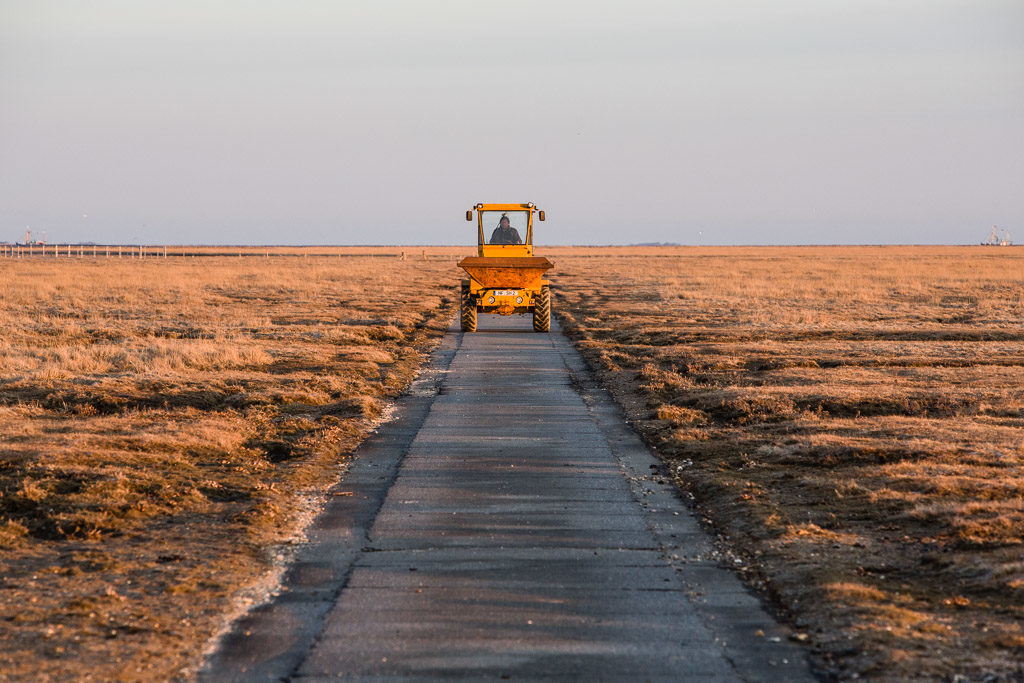
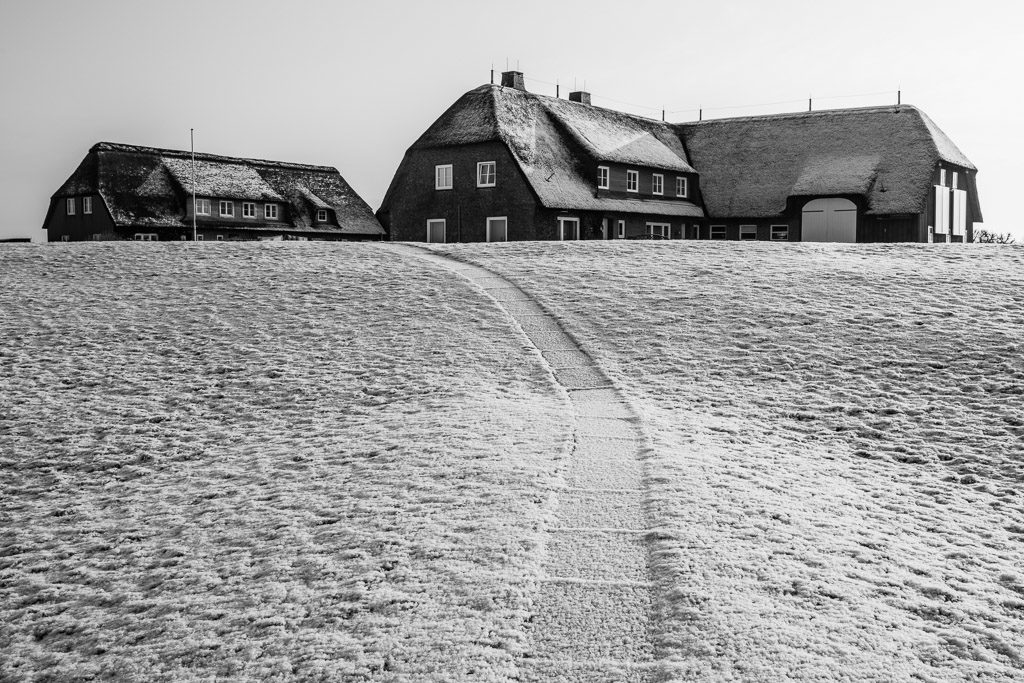
Die komplette Auswahl der Hallig Gröde 2013 Bilder findet sich in den beiden Google+ Alben Gröde 2013 und Gröde 2013 BW.
The complete selection of Hallig Gröde 2013 images is available on Google+, albums Gröde 2013 and Gröde 2013 BW.
Tides and Stars
Tides and Stars – Gröde 2013 Timelapse from Martin Junius on Vimeo.
A first shot at a timelapse video featuring tides and stars photographed around Easter 2013 on Hallig Gröde.
Image editing in Lightroom, video editing in Virtualdub, final encoding in Handbrake. Music created on iPad using Garageband, Addictive Synth, Sunrizer, Animoog.
Eine erste Version des Zeitraffervideos mit Gezeiten und Sternen, fotografiert Ostern 2013 auf Hallig Gröde.
Bildbearbeitung in Lightroom, Videobearbeitung in Virtualdub, Endversion kodiert in Handbrake. Musik entstanden am iPad mit Garageband und den Synthesizern Addictive Synth, Sunrizer, Animoog.
The Rest of Australia

… well sort of. ;-) Beside the total solar eclipse on 14 Nov 2012 in Queensland there was a lot more to see during our 2012 trip to Australia. The new album Australia 2012 showcases pictures from Sydney, the Blue Mountains and of course Queensland. Some of the Eclipse and Australia images were taken by Susanne.
… darf natürlich auch nicht fehlen. ;-) Neben den Bilder rund um die Sofi am 14. November 2012 in Queensland gibt’s den Rest der Bilder in einem neuen Fotoalbum Australia 2012. Einige der Sofi- und Australienbilder stammen von Susanne.
